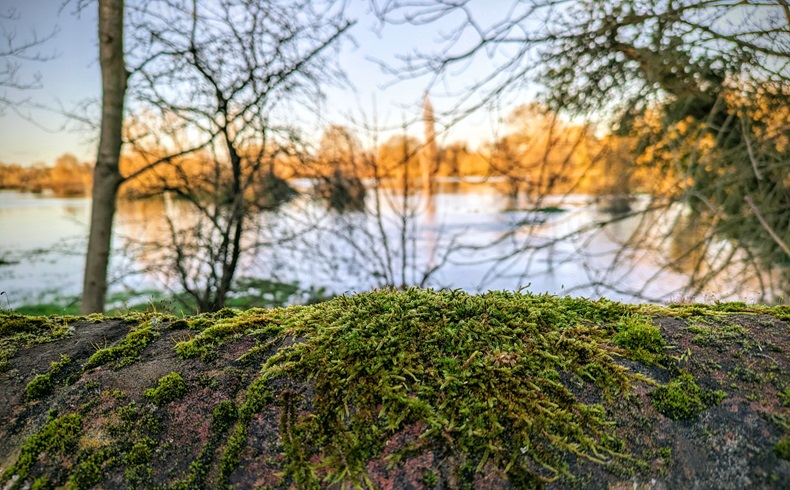
Here’s some moss I saw on a recent walk along the Thames River, west of London. The Thames itself was too high to walk where my traveling companion and I had planned – the trail was underwater, and so were lots of fields and the meadow in the background of this photo, where a woman we encountered had hoped to walk her dog. Everyone in the area was walking their dogs on the streets that week.
I love to see moss. That’s why I took the picture. Also, I can never remember what moss is.
Is moss a plant or…some other thing? Classifying things is hard. What about fungus? Animal, vegetable, or mineral? The answer is often “it depends”–and people have answered these questions in different ways at different times. Is zucchini a fruit or a vegetable? Well, are you interested in its botanical or culinary function? Is whale a fish or mammal? The answer was a different a few centuries ago than it is now. And a lot has changed about the classification of life since I learned it in school.
But on moss, the internet tells me, we are clear. A moss is a plant. A funny little plant with spores and no roots. A beautiful plant that looks soft like a carpet. A plant that can survive dry spells by drying itself out. A plant that grew happily on the bridge over this stream–this stream that is currently just another part of a meadow, or is it a lake, or is it a river. Ask at different times and you’ll get a different answer.
Photo: Helen Fields, obviously
I guess it’s important to classify things. Like when politicians classify pizza as a vegetable so it can be served as a school lunch.
Good one, Fred! We sure do a lot of classifying and categorizing in our overly left-brained world. Probably usually to serve an existing agenda we already hold to.
Mosses are fun. They belong to the bryophytes, along with liverworts and hornworts. It is frustrating that English language field guides and such that treat mosses often overlook the liverworts and hornworts, an omission much less common in comparable German books, which I attribute to the fact that the German word for liverwort is Lebermoos – “liver-moss” – and also includes the hornworts. Not that there is any confusion about the differences between the three groups, they just are gathered as all being “mooses” under the same umbrella. A shared Latin taxonomy shouldn’t be taken as the “last word” on cultural perceptions.
Lichens have also had a history of classification issues, long known as a symbiosis of fungus and algae … ummm … one or more of this and that, with what seems to be an ever increasing rate of change on that understanding.
Slime molds can be the most fun, with the popular favorite, Fuligo septica (better known as “dog vomit slime mold”), entertaining onlookers with its habit of going walk-about (ever so slowly), as well as its evocative appearance. We have found it in our urban backyard, and in the parking strip out front.